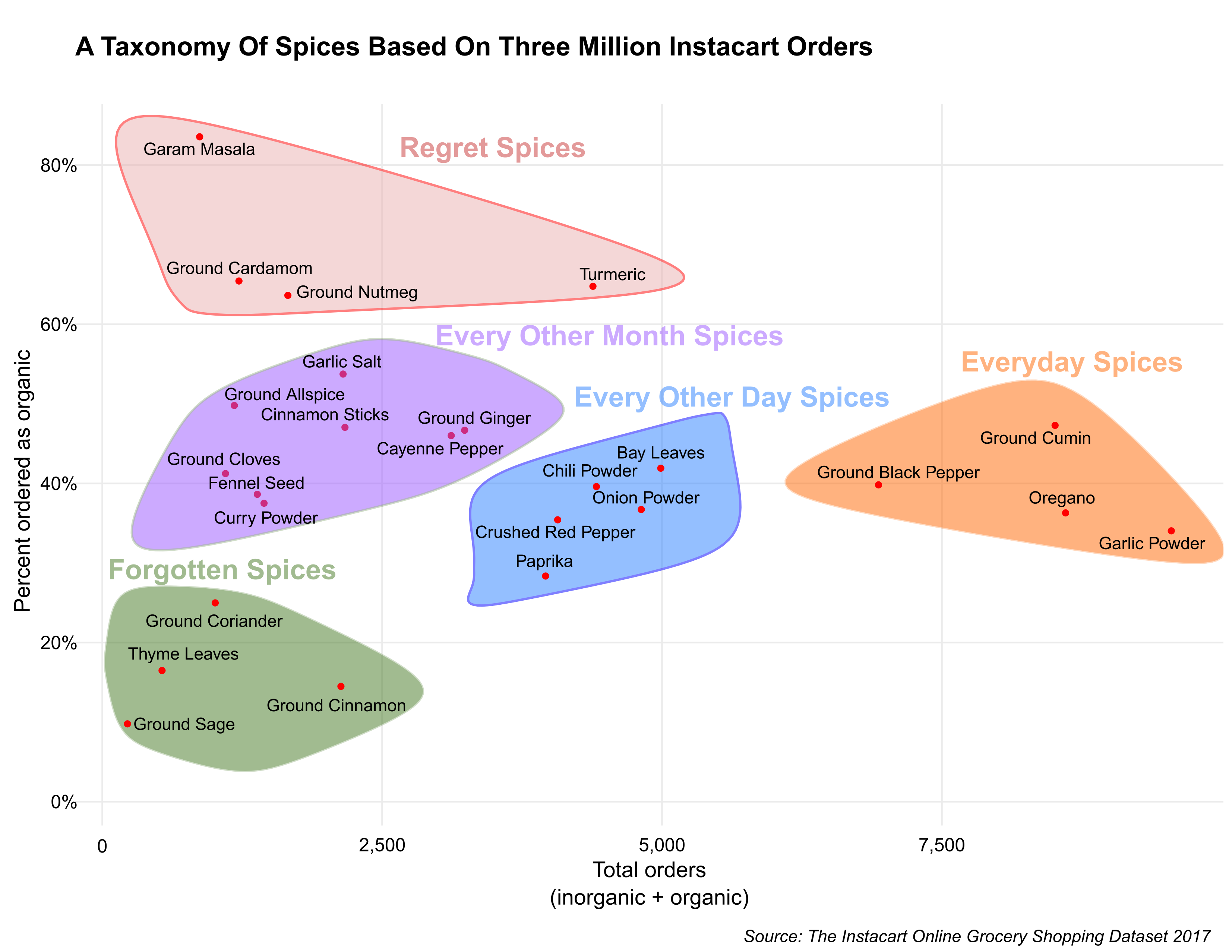A Taxonomy Of Spices Based On Three Million Instacart Orders
The Awl’s holiday series on flavors and spices.

Earlier this summer, Jeremy Stanley, the Vice President of Data Science at Instacart, made the data on three million Instacart orders available for anyone to look at. Stanley wrote in a Medium post that he hoped people would use the data “to test models for predicting products that a user will buy again, try for the first time or add to cart next during a session.” Stanley should have known though that the data would ultimately be used to find out when shoppers purchase condoms rather than to develop some breakthrough recommendation algorithm.
The data includes the names of products and the aisles those products are found in at the grocery store. For example, 797 different items from the spice aisle have been purchased at least once on Instacart.
Above is a chart that looks at how many times the most common spices have been ordered (the inorganic and organic versions combined) versus the proportion of those orders that are for the organic version*. By looking at the chart we can see that that the most ordered spice on Instacart is garlic powder with 9,549 orders and of those orders 34 percent are for the organic version. Compare that to garam masala, which has far fewer total orders (870), but a much higher organic order rate (84 percent).
The relationship between how often a spice is ordered and the demand for its organic version can help us create a taxonomy of spices.
First, there’s the Everyday Spices. Garlic powder, as we’ve already mentioned, in addition to oregano, cumin, and black pepper make up this group. On average, about 40 percent of orders for these spices are for the organic version. These are the spices that sit on the front row our spice cabinets and because of that we don’t mind shelling out the few extra bucks to ensure that the spices haven’t been exposed to irradiation.
After that there’s the Every Other Day Spices and the Every Other Month Spices. These are similar to your Everyday Spices in that we purchase the organic version of them nearly as often as the inorganic version. The key difference is that we often accumulate more than one bottle of theses spices because we can’t remember if we already have it since we don’t use them regularly. These spices sit on the second and third row of our spice cabinets.
Next, there’s the Forgotten Spices. These are the spices that we bought two years ago, forgot about, and prompt us to Google, “Do spices have an expiration date?” These spices offer the most compelling argument in favor of meal subscription services like Blue Apron, which send you a perfectly portioned amount of spice.
Lastly there’s the group that includes garam masala, turmeric, cardamom, and nutmeg. All four of the organic versions of these spices are ordered more often than the inorganic version. These are the spices for when you plan to make tikka masala instead of ordering it on Seamless for the fourth time this week, but then you get to the grocery store and realize all they have is the organic version of garam masala, turmeric, and cardamom, which collectively cost more than the three tikka masalas you already purchased this week so then you hem and haw in the spice aisle about whether to go home and order-in again but you don’t because you already put pants on so you might as well buy the spices and cook the food yourself. These are the Regret Spices and they sit at the very back of our cabinets.
*I’ve excluded the different kinds of salt (there are many) and spices that don’t have an obvious organic counterpart.
